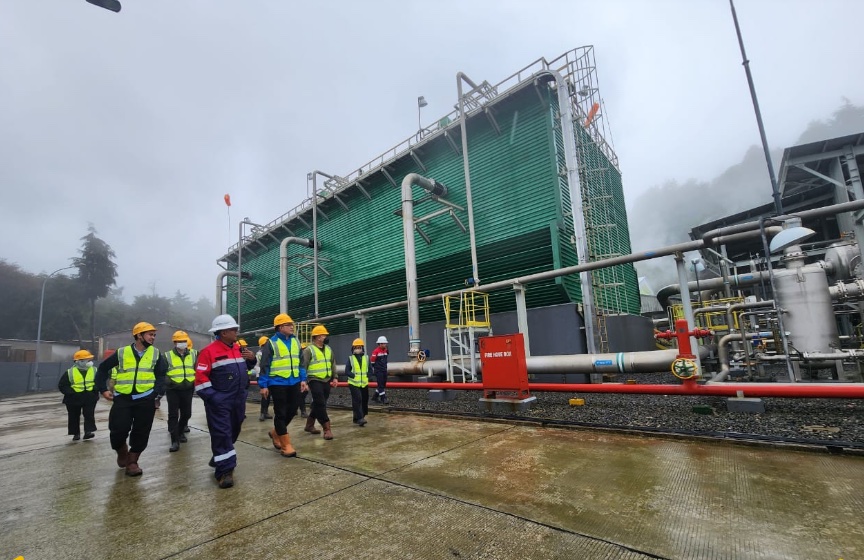Indonesia’s energy transition is a national agenda to ensure energy security and achieve a green economy for sustainability. The energy transition reflects Indonesia’s commitment to expanding access to affordable, clean technology for sustainable development. This effort drives a greener economic recovery, supporting long-term environmental and economic goals. In an interview in January 2023, Coordinating Minister for Economic Affairs Airlangga Hartarto said that the Government had increased the target for the composition of New Energy and Renewable Energy (EBET) in the energy mix to 23% in 2025 and 31% in 2050.
Indonesia has the potential to utilize EBET sources, for example, the construction of a Green Industrial Park in North Kalimantan whose energy source is from the Kayan River. The hydropower potential of the Kayan River is estimated at 11-13 gigawatts. Indonesia also has other green energy in the form of geothermal energy. Geothermal potential in Indonesia is one of the largest in the world with hundreds of potential points spread throughout Indonesia. According to the Ministry of Energy and Mineral Resources, Indonesia has a geothermal potential of approximately 23.4 gigawatts. Indonesia ranks second globally after the United States in geothermal energy utilization, with an installed PLTP capacity of 2.3 gigawatts.
Geothermal energy comes from magma in the bowels of the earth in volcanic mountain areas. Hot steam and high pressure emitted from wellhead production (wellhead) can drive steam turbines in geothermal power plants or dry agricultural products directly. Geothermal energy is clean energy that is sustainable(sustainable) if managed well. Geothermal is becoming more crucial in decarbonization efforts to support clean energy. Its utilization aligns with the Bali Compact principle from the 2022 Indonesian G20 Presidency. This principle focuses on diversifying energy systems and mixes while reducing emissions from all energy sources.
Ferry Ardiyanto’s Visit to Dieng Geothermal Power Plant: Reviewing the Implementation of Energy Transition
Ferry Ardiyanto, Assistant Deputy for Multilateral Economic Cooperation at the Coordinating Ministry for the Economy, visited Dieng’s geothermal power plant. Along with the G20 Sherpa Secretariat Team, he observed the energy transition implementation at the PT Geo Dipa Energi (GDE) facility in Central Java.
The Coordinating Ministry for Economic Affairs Team, received by General Manager Herdian Ardi Febrianto, visited the Dieng-2 drilling unit. They also visited Pad 29 and the Dieng-1 power plant, learning about geothermal energy exploration, exploitation, and electricity generation. The team also learned about the electricity distribution produced by the GDE Geothermal Power Plant (PLTP). The group then met with the Head of Sikunang Village to discuss the GDE PLTP’s Corporate Social Responsibility program. They reviewed the program, which focuses on building clean water wells in Sikunang Village for the community’s benefit.
The Government supports energy transition acceleration with Presidential Regulation Number 112 of 2022. This regulation focuses on renewable energy development for electricity supply. It aims to help Indonesia meet its emissions reduction target by 2030. In addition, Indonesia is increasing its commitment to achieving Nationally Determined Contribution (NDC) in 2030 with an emission reduction target as of 23 September 2022 of 31.89% (previously 29%) unconditionally and 43.20% (previously 41%) conditionally. With government programs and investments, Indonesia aims to achieve net zero emissions by 2060 or sooner, in line with the Paris Agreement.
Source : https://ekon.go.id/publikasi/detail/4996/Pemcepatan-transisi-energi-di-dalam-negeri-guna-mencapai-target-net- zero-emissions-by-2060
Read other Articles: Indonesia’s Target for Net Zero Emission (NZE) 2060





